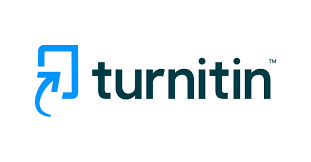Assessment of Unfermented Beverages Intake by Adult Population in Herat City
Abstract
Beverages play a prominent role in regulating body activities, such as regulating body temperature, helping to absorb food, protecting tissues, disposal of waste materials, refreshing the body, and increasing body performance. Usually, the human body obtains its required water through the consumption of drinking water, tea, cola, energy drinks, milk and dairy products, coffee and other beverages. We evaluated the amount of beverage intake by the adult population of Herat city during summer 2021. In this research 583 standard questionnaires were randomly distributed among adult population of 15 regions of Herat city and the results were analyzed. The highest beverage intake was observed for water (2.81±0.92 times/day @ 349.57±190.12 ml for each time) and followed by was tea (1.84±0.89 times/day @ 426.76±228.78 ml each time). The average fluid intake by the adult population was 2390.61 ml per day, where the men drank an average of 2528.91 ml/day and women averaged 2363.88 ml/day of beverages. Most of the participants consumed beverages for the purposes of quenching thirst, health concerns, habitual and refreshment. The findings indicate that the amount of beverage intake by adult population of Herat city is lower than the WHO guidelines and the United States fluid intake recommendations.
Keywords
Full Text:
PDFReferences
Abdullahi, M., Naseri, E., Bondarianzadeh, D., Mohammadpour, B., Houshiar-rad, N. 2013. Types and amounts of fluids consumed by the adult population of Tehran-2011. Iran. J. Nutr. Sci. Food Technol, 8(1): 71-80.
Afghanistan Statistical Yearbook 2019-20. 2020. National Statistics and Information Authority. Pp.: 38. Retrieved from:https://nsia.gov.af:8080/wp- content/uploads/2019/11/Estimated-Population-1398.pdf
Ashurst, P., and Hargitt, R., 2009. Soft Drink and Fruit Juice Problems Solved. Elsevier. ISBN: 978-0081009185.
Howard G, Bartram J., 2003. Domestic water quantity, service, level and health. Geneva: World Health Organization.
Leiberman, H.R., 2007. Hydration and cognition: a critical review and recommendations for future research. J Am Coll Nutr, 26(5): 555-561.
Martin, J.H., Elmore, A.C., 2007. Water drinking attitudes and behaviours in Guatemala: an assessment and intervention. J. Rural Trop Public Health, 6: 54-60.
Michael, N., Sawka, Samuel, N., Cheuvront, R.D., Robert Carter, M.P.H., 2005. Human Water Needs. Nutr Rev, 63: 30–39.
Nissensohn, M., Castro-Quezada, I., Serra-Majem, L., 2013. Beverage and water intake of healthy adults in some european countries. Int. J. Food Sci. Nutr., 64:801–805. doi: 10.3109/09637486.2013.801406.
Özen, A.E., Bibiloni, M., Del Mar, Pons A., Tur, J.A., 2014. Fluid intake from beverages across age groups: a systematic review. J Hum Nutr Diet, 1-26.
Randy, P.L., Rhonda, S., Sebastian, M.A., Wilkinson Enns, M.S., R.D., Joseph, D., Goldman, M.A., 2011. Beverage Choices of U.S. Adults. Food Surveys Research Group. Dietary Data Brief No. 6.
Rhonda, S., Sebastian, M.A., Wilkinson Enns, M.S., R.D., L.N; Joseph, D., Goldman, M.A., 2011. Drinking Water Intake in the U.S., Food Surveys Research Group Dietary Data Brief. 7: 1-8.
Rosinger, A., Kirsten A. H., 2016. Daily Water Intake among U.S. Men and Women, 2009–2012. NCHS Data Brief. No. 242.
Strippoli, F.M., Jonathan, C., Craig, E.R., Victoria, M.F., Jie, J.W., Paul, M., 2011. Fluid and nutrient intake and risk of chronic kidney disease. Nephrol, 16: 326–334.
Zizza, C.A., Ellison, K.J., Wernette, C.M., 2009. Total water intakes of community-living middle-old and oldest-old adults. J. Gerontol., 64: 481-486
DOI: http://dx.doi.org/10.33512/fsj.v5i2.20960
Refbacks
- There are currently no refbacks.

This work is licensed under a Creative Commons Attribution-ShareAlike 4.0 International License.











